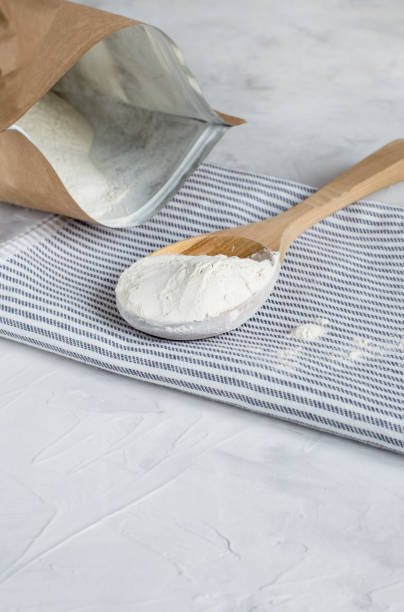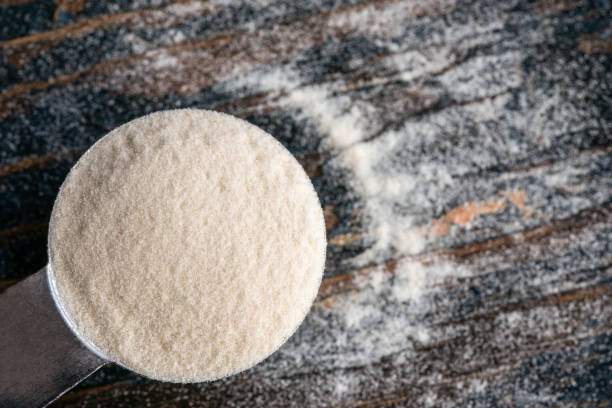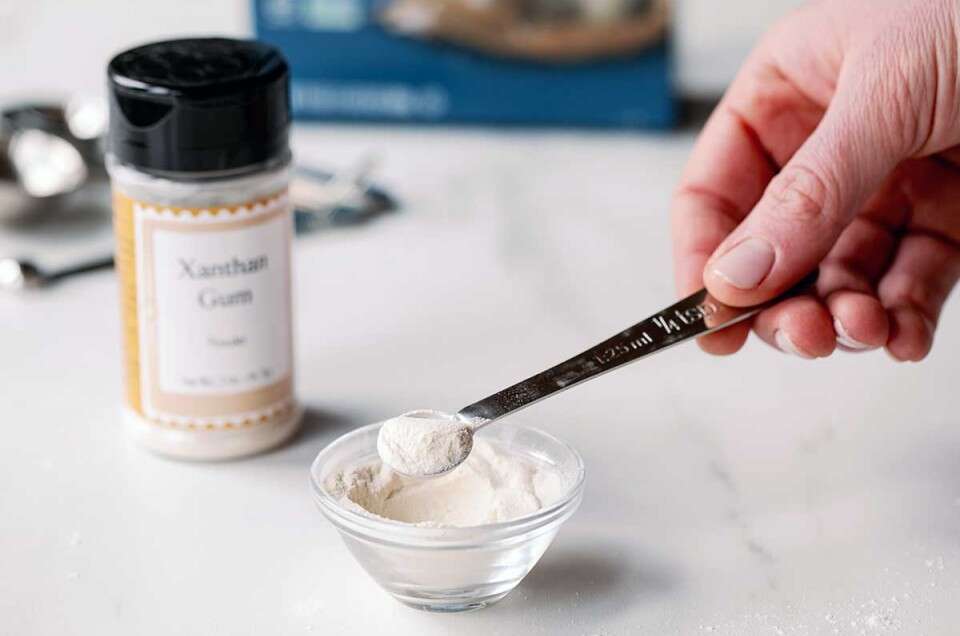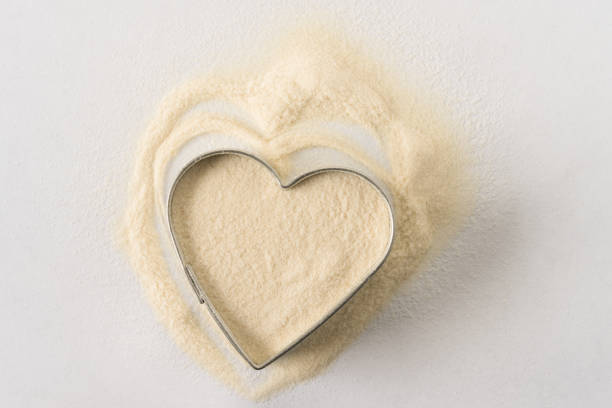Xanthan Gum
Xanthan Gum was discovered by an extensive research effort by Allene Rosalind Jeanes and her research team at the United States Department of Agriculture, which involved the screening of a large number of biopolymers for their potential uses. Xanthan Gum was approved for use in foods after extensive animal testing for toxicity in 1969. It is accepted as a safe food additive in the USA, Canada and Europe, with E number E415.
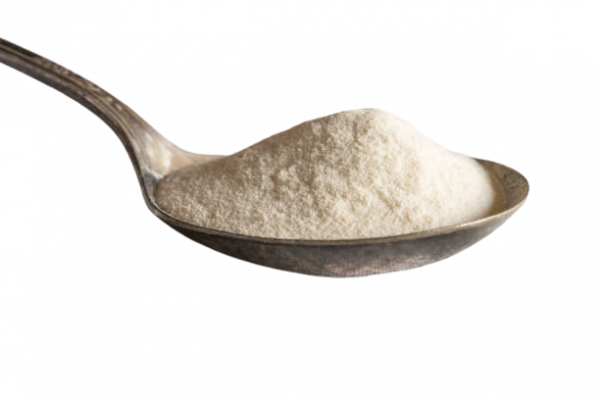
- Overview
- Application
- Spesification
Overview
Xanthan gum is a polysaccharide used as a food additive and rheology modifier.(Davidson ch. 24) It is produced by a process involving fermentation of glucose or sucrose by the Xanthomonas campestris bacterium.
Chemical Structure
The backbone of the polysaccharide chain consists of two β-D-glucose units linked through the 1 and 4 positions. The side chain consists of two mannose and one glucuronic acid, so the chain consists of repeating modules of five sugar units. The side chain is linked to every other glucose of the backbone at the 3 position. About half of the terminal mannose units have a pyruvic acid group linked as a ketal to its 4 and 6 positions. The other mannose unit has an acetyl group at the 6 positions. Two of these chains may be aligned to form a double helix, giving a rather rigid rod configuration that accounts for its high efficiency as a viscosifier of water. The molecular weight of xanthan varies from about one million to 50 million depending upon how it is prepared.
History
It was discovered by an extensive research effort by Allene Rosalind Jeanes and her research team at the United States Department of Agriculture, which involved the screening of a large number of biopolymers for their potential uses. It was brought into commercial production by the Kelco Company under the trade name Kelzan in the early 1960’s. (Whistler p. 486) It was approved for use in foods after extensive animal testing for toxicity in 1969. It is accepted as a safe food additive in the USA, Canada and Europe, with E number E415.
Uses
Xanthan gum is used as a thickener in sauces, as an agent in ice cream that prevents ice crystals from forming, and as a fat substitute that adds the “mouth feel” of fat without the calories. It is used in canned pet food to add “cling”.
In pastry fillings, it prevents “weeping” (syneresis) of the water in the filling, protecting the crispness of the crust. It has a very high viscosity (thickness) even when very little is used.
When mixed with guar gum or locust bean gum, the viscosity is more than when either one is used alone, so less of each can be used. The backbone of Xanthan gum is similar to cellulose, but the trisacharide side chains of mannose and glucuronic acid make the molecule rigid, and allow it to form a right-handed helix. These features make it interact with itself and with other long chain molecules to form thick mixtures and gels in water.
Application
One of the most remarkable properties of xanthan gum is its capability of producing a large increase in the viscosity of a liquid by adding a very small quantity of gum, on the order of one percent. In most foods, it is used at 0.5%, or even as low as 0.05%. The viscosity of xanthan gum solutions decreases with higher shear rates; this is called pseudoplasticity.
This means that a product subjected to shear, whether from mixing, shaking or even chewing, will thin out, but once the shear forces are removed, the food will thicken back up. A practical use would be in salad dressing: The xanthan gum makes it thick enough at rest in the bottle to keep the mixture fairly homogeneous, but the shear forces generated by shaking and pouring thins it so it can be easily poured. When it exits the bottle, the shear forces are removed and it thickens back up so it clings to the salad. Unlike other gums, it is very stable under a wide range of temperatures and pH.
In foods, xanthan gum is most often found in salad dressings and sauces. It helps to stabilize the colloidal oil and solid components against creaming. Also used in frozen foods and beverages, xanthan gum creates the pleasant texture in many ice creams. Toothpaste often contains xanthan gum, where it serves as a binder to keep the product uniform. Xanthan gum is also used in gluten-free baking. Since the gluten (found in wheat) must be omitted, xanthan gum is used to give the dough or batter a “stickiness” that would otherwise be achieved with the gluten. It is also a preferred method of thickening liquids for those with swallowing disorders, since it does not change the color or flavor of foods or beverages.
| Media | Dosage % | Functionality |
| Beverages/Fruit Juice | 0.1-0.4 | Thickening, Suspension, Improving mouth feel, |
| Dairy Drink | 0.01-0.20 | Thickening, suspension, Anti-delamination, Foaming, Anti-aging |
| Ice Cream | 0.1-0.3 | Increase micropores, Ice crystalization resistance, Improving the mouth feel, Shorten aging process |
| Jelly | 0.5-2.5 | Improving mouth feel, water binding, Increase flexibility especial for multi-layer jelly |
| Soy Sauce & Oyster Sauce | 0.05-0.1 | Thickening, Salt Tolerance, Oxidation Resistance, Improving viscosity |
| Salad Dressing | 0.1-0.3 | Thickening, Improving mouth feel, Shape hodling |
| Frozen Food | 0.1-0.2 | Increase Freeze/Thaw Stability, Thickening, Dehydrate resistance |
| Sausage & Lunchon Meat | 0.2-0.3 | Tenderizing, Easy filling and shape formation, Dehydrate resistance |
| Canned Meat | 0.1-0.2 | Gelling , Fxiing Flavor, Prolonging shelf life |
| Cheese | 0.2-0.5 | Accelerating Curding, Shape holding, Dehydrate resisitance |
| Bakery | 0.1-0.3 | Heat Stablizer, Foam forming, Water binding, Improving mouth feel, Extend shelf life, |
| Instant Noodle | 0.2-0.3 | Enhance tenacity, Improving chewing and oil-saving |
| Dehydrate Food | 0.2-0.4 | Accelerating recovery, Fxing Flavor |
Spesification
| Product Identification | |
| CAS NO. | 11138-66-2 |
| Toxicological | LD50: Not available. LC50: Not available |
| Chemical Name: | Not available |
| Chemical Formula | Not available |
| Physical and Chemical Properties | |
| Physical state | Solid |
| Boiling Point | Decomposes |
| Specific Gravity | 1.5 (Water = 1) |
| Dispersion Properties | See solubility in water |
| Solubility | Easily soluble in cold water |
| Odor | Not available |
| Taste | Not available |
| Specification | |
| Appearance | White-like or light-yellow free flowing powder |
| Ph Value(% Solution) | 6.0-8.0 |
| Loss on drying(%) | 1.5 |
| Lead (ppm) | max 5 |
| Arsenic(ppm) | max 3 |
| Heavy Metals(ppm) | max 20 |
| Total Plate Count(cfu/g) | max 2000 |
| Salmonella | negative |
| E.coli | negative |
